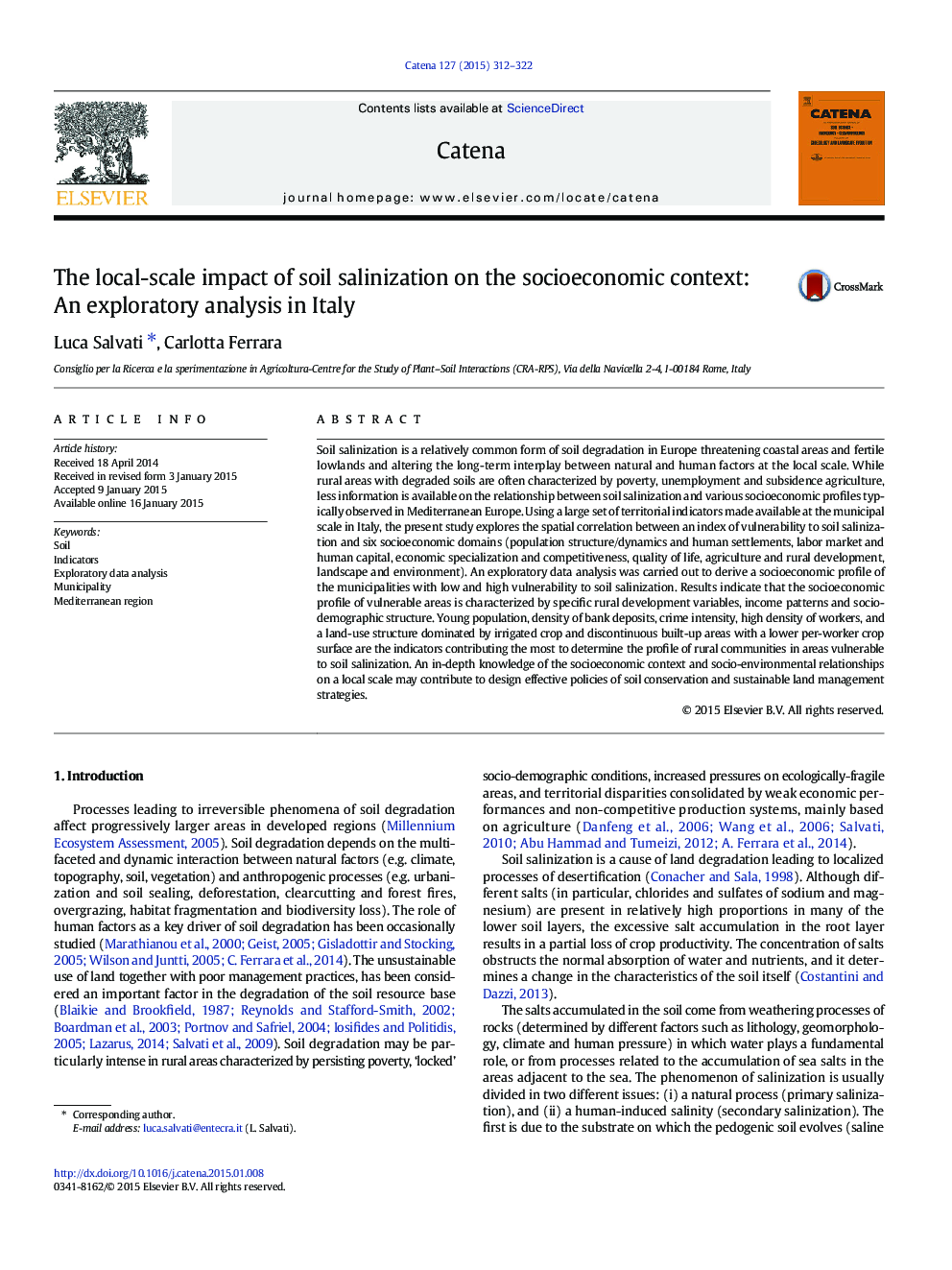| کد مقاله | کد نشریه | سال انتشار | مقاله انگلیسی | نسخه تمام متن |
|---|---|---|---|---|
| 4571233 | 1629225 | 2015 | 11 صفحه PDF | دانلود رایگان |
• Soil salinization is a relatively common form of soil degradation in Europe.
• We study soil salinization vis à vis 122 territorial indicators in Italy.
• We used multivariate analysis to profile vulnerable areas to soil salinization.
• Socioeconomic structure and rural development are the most discriminating variables.
• Knowledge of the local context informs more effective policies of soil conservation.
Soil salinization is a relatively common form of soil degradation in Europe threatening coastal areas and fertile lowlands and altering the long-term interplay between natural and human factors at the local scale. While rural areas with degraded soils are often characterized by poverty, unemployment and subsidence agriculture, less information is available on the relationship between soil salinization and various socioeconomic profiles typically observed in Mediterranean Europe. Using a large set of territorial indicators made available at the municipal scale in Italy, the present study explores the spatial correlation between an index of vulnerability to soil salinization and six socioeconomic domains (population structure/dynamics and human settlements, labor market and human capital, economic specialization and competitiveness, quality of life, agriculture and rural development, landscape and environment). An exploratory data analysis was carried out to derive a socioeconomic profile of the municipalities with low and high vulnerability to soil salinization. Results indicate that the socioeconomic profile of vulnerable areas is characterized by specific rural development variables, income patterns and socio-demographic structure. Young population, density of bank deposits, crime intensity, high density of workers, and a land-use structure dominated by irrigated crop and discontinuous built-up areas with a lower per-worker crop surface are the indicators contributing the most to determine the profile of rural communities in areas vulnerable to soil salinization. An in-depth knowledge of the socioeconomic context and socio-environmental relationships on a local scale may contribute to design effective policies of soil conservation and sustainable land management strategies.
Journal: CATENA - Volume 127, April 2015, Pages 312–322
